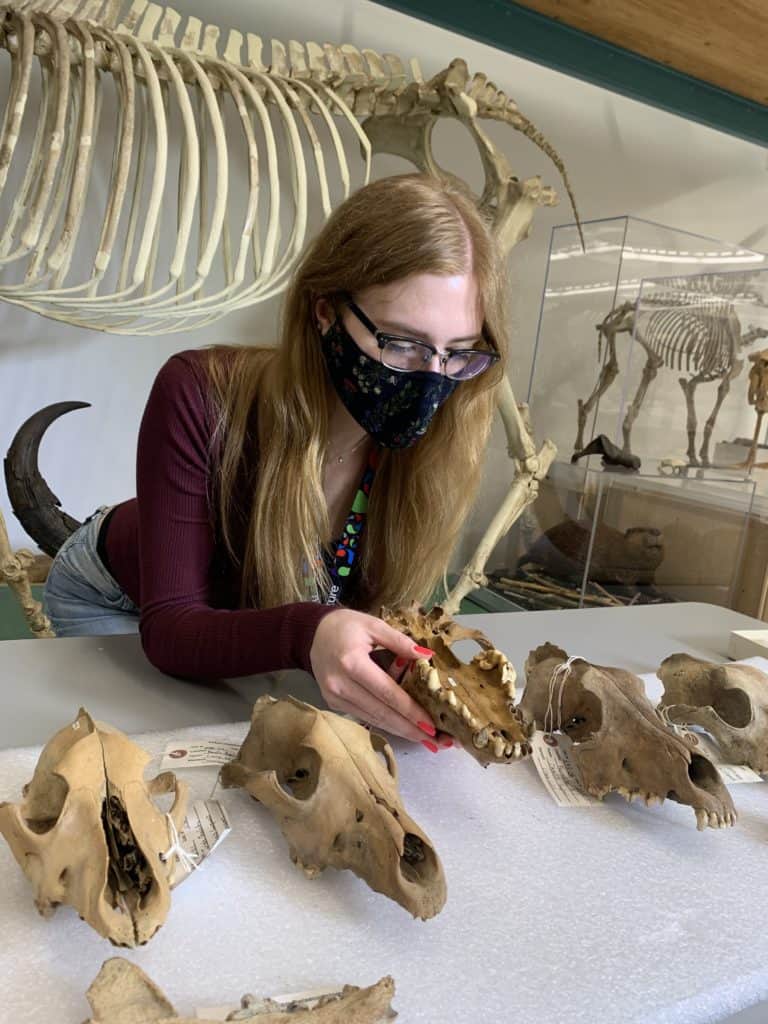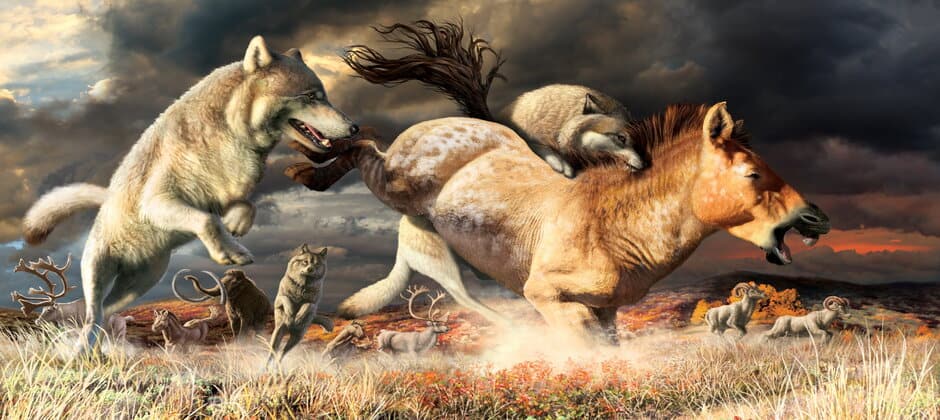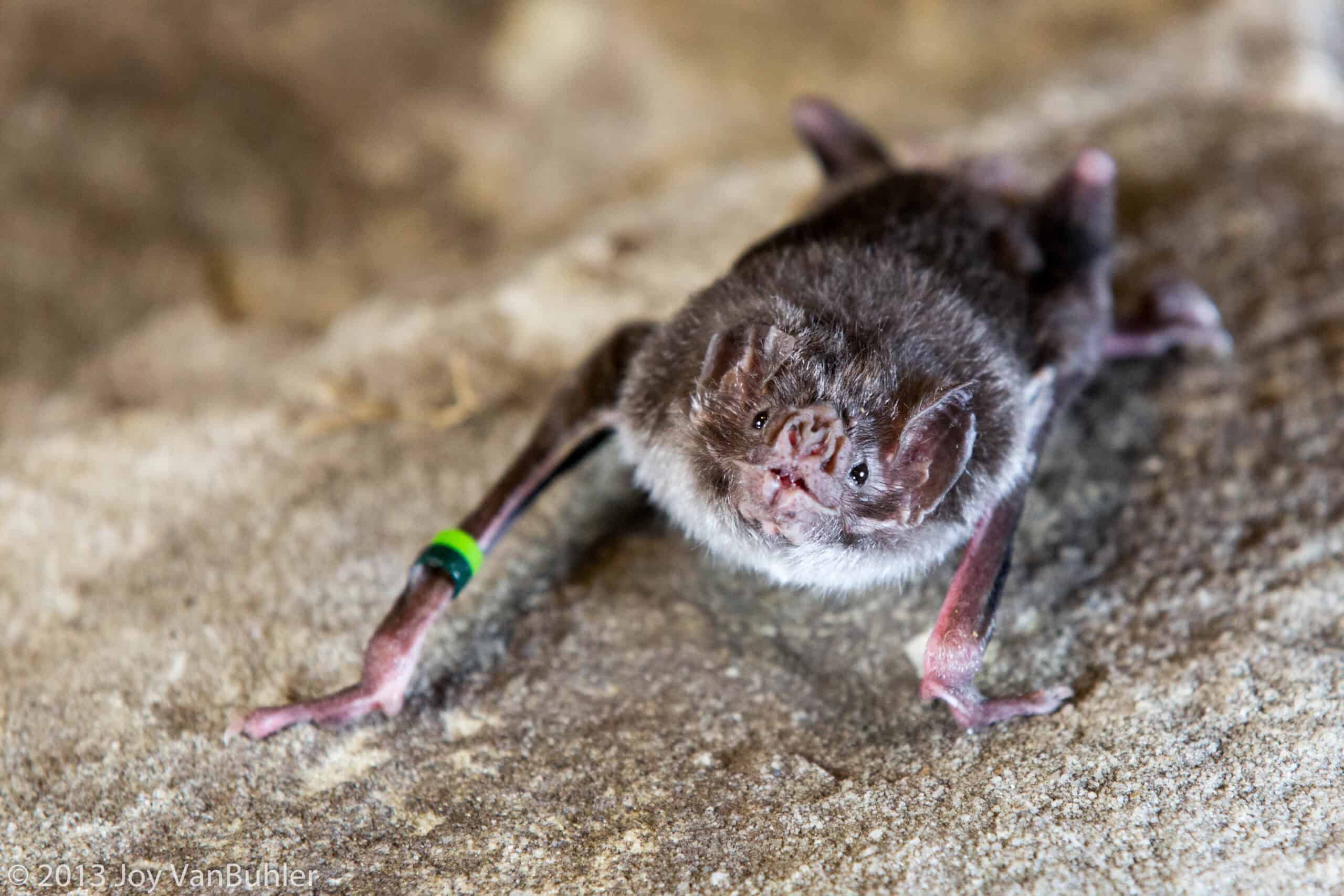Share this article
Wolves have been resilient since the Pleistocene
The climate began to change drastically in Yukon at the same time that a new invasive species was spreading across the continent, outcompeting large mammals that lived there and driving some of them to extinction.
The time was between 15,000-11,700 years ago, and the invasive species was humans. But back then, gray wolves were learning to cope with some massive changes to the prey on their menu — much like they are today.
Researchers think looking back at these historical changes may provide clues about how wolves may survive some of the more recent challenges humans cause.
“If we’re able to understand how wolves in the Pleistocene managed to survive that big extinction at the end of the epoch, maybe we can understand how they might cope with ongoing factors in the Arctic today like climate change, logging and habitat loss,” said Zoe Landry, a master’s student in biology at Carleton University.
During the Pleistocene — also known as the most recent Ice Age — the Earth was experiencing climate change due natural variation. As this epoch began to end starting roughly 15,000 years ago, many wolf (Canis lupus) prey species including step bison (Bison priscus) and woolly mammoths (Mammuthus primigenius) couldn’t cope with the warmer weather. Meanwhile, humans were likely beginning to spread across North America during this time as well, hunting many of the creatures that wolves relied on to extinction.
“Humans could have been the final nail in the coffin, so to speak,” Landry said.
Many of the carnivores that relied on the same animals that wolves did died out as well, such as scimitar cats (Homotherium serum) and others. But wolves persisted on the landscape.
In research published recently in Palaeogeography, Palaeoclimatology, Palaeoecology, Landry and her co-authors combined an analysis of dental microwear and stable isotope analysis on wolf fossils and modern bones from Yukon to find out how the prey base changes at the time affected their diets.

Zoe Landry holds a 40,000-year old gray wolf skull that’s part of the Government of Yukon collection. Credit: Danielle Fraser
Clues like small pits on their teeth are indicative of the animals gnawing on harder material like bones, while scratches on teeth appear more often when they’re slicing through softer flesh alongside the bones. The former is typically interpreted as representing animals that were scavenging more often in times of relative prey scarcity, while the scratches are associated with abundant prey bases. This evidence can be seen on wolves today just as it can in fossil wolves from the end of the last Ice Age.
Landry, who conducted this work as part of her bachelor’s thesis at Carleton, said that the ratio of scratches against pits in teeth didn’t differ much in today’s wolves and the wolves of the Pleistocene.
“They’re really similar patterns. It just basically means they are doing the same things. They are using the prey they catch in similar ways,” she said.
Researchers had previously believed that wolves probably survived on scavenging for a period of the Pleistocene as some of their prey species became extinct. But she said this study found no evidence of that.
The team wanted to find out more detail about what the wolves were eating. They conducted stable isotope analysis, which reveals the ratio of nitrogen and carbon isotopes left in fossils and can help researchers draw conclusions about what they preyed on.
Analysis on Pleistocene wolves in Yukon showed they were mostly eating now extinct species of horses, though they also ate Dall’s sheep (Ovis dalli dalli), mammoths, muskox (Ovibos moschatus) and caribou (Rangifer tarandus).
By the end of the Ice Age, the horses were completely wiped out. But the remains showed that over time, the wolves adapted to a new diet.
“The biggest implication that we can get out of the study is that wolves are pretty good at switching prey, which bodes well for their overall adaptability,” Landry said.
Today in Yukon, wolves’ diets are composed of about 60% caribou and moose (Alces alces).
Landry said the ability of a top predator like wolves to adapt to new prey items is impressive and suggests that they may able to adapt to changes, in general. However, if caribou numbers continue to drop, the top dogs of the North may have less options when it comes to finding new prey items.
“If [caribou] go extinct, then [wolves] probably don’t have as good of a shot at surviving like they currently do in Yukon,” she said.
The natural climate change that occurred in the Pleistocene was much slower than the current warming we are experiencing. With the climate changing quickly and with other challenges such as habitat loss and alteration affecting modern day wolves in the North, conserving prey species like caribou and moose becomes even more important for the future of these predators, Landry said.
Header Image: Gray wolves take down a horse on the mammoth-steppe habitat of Beringia during the late Pleistocene (around 25,000 years ago). Credit: Julius Csotonyi








